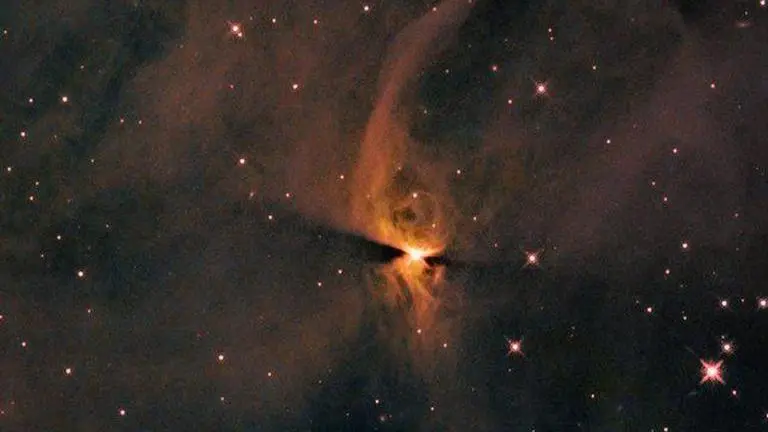Updated 18 November 2021 at 17:46 IST
NASA's Hubble telescope captures a protostar 'almost' born in a reflection nebula
The Hubble Space Telescope has its eyes fixed on another intriguing subject and this time, it is a newly forming star in a nebula.
- Science News
- 2 min read

The Hubble Space Telescope has its eyes fixed on another intriguing subject and this time, it is a newly forming star in a nebula. An image shared by Hubble on Wednesday explained how it is spying on a protostar in a reflection nebula dubbed IC 2631. “This new Hubble image shows a protostar within the reflection nebula IC 2631. Once the protostar collects enough material, nuclear fusion will begin”, read the tweet shared by Hubble. Check out the image below.
⭐ A star is (almost) born
— Hubble (@NASAHubble) November 17, 2021
This new Hubble image shows a protostar within the reflection nebula IC 2631. Once the protostar collects enough material, nuclear fusion will begin: https://t.co/XJMFabAR1r#NebulaNovember pic.twitter.com/gaXAAdAfX4
What are protostars?
Stars are born from clouds of gas and dust that collapse under their own gravitational attraction. Protostars are objects that are created when these clouds collapse resulting in a dense hot core that stars gathering dust and gas. "Protostars shine with the heat energy released by clouds contracting around them and the accumulation of material from the nearby gas and dust. Eventually, enough material collects, and the core of a protostar becomes hot and dense enough for nuclear fusion to begin, and the transformation into a star is complete," NASA explained in a statement. Interestingly, the leftover gas and dust can either become planets, asteroids, comets, or remain as dust.
The image you see above has been captured in infrared featuring the protostar in a reflection nebula IC 2631 which is a part of the Chamaeleon star-forming region in the southern constellation Chamaeleon. Since protostars emit a lot of heat energy, and their visible light is obscured by the dust around them, they are visible primarily in infrared light. As per NASA, this image is part of a Hubble survey targeting 312 protostars within molecular clouds previously identified with the Spitzer and Herschel infrared space observatories. "Hubble’s advanced infrared capabilities could better resolve the protostars and examine their structure, including the accumulating gas and dust and faint companion objects", says NASA. Hubble shared the image following its recent release of a stunning B-Type star factory nebula that was snapped churning out stars.
B-Type star factory nebula
Located in the constellation Aquila, this particular nebula called ‘B-Type star factory’ is named G035.20-0.74 and is known for producing a particular kind of massive star known as a B-Type star. These stars are hot, young, and blue stars up to five times hotter than our Sun. Tap here to know more about the nebula.
Advertisement
Welcome to the B-Type star factory ✨
— Hubble (@NASAHubble) November 16, 2021
This star-forming region produces B-Type stars: Young, blue stars up to five times hotter than our Sun!
Learn more: https://t.co/0gBDX9oLBD#NebulaNovember pic.twitter.com/GS7c4Wtw4r
(Image: Twitter/@NASAHubble)
Published By : Harsh Vardhan
Published On: 18 November 2021 at 17:46 IST
